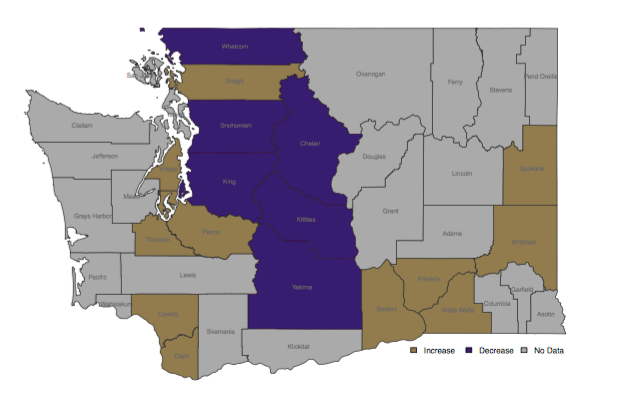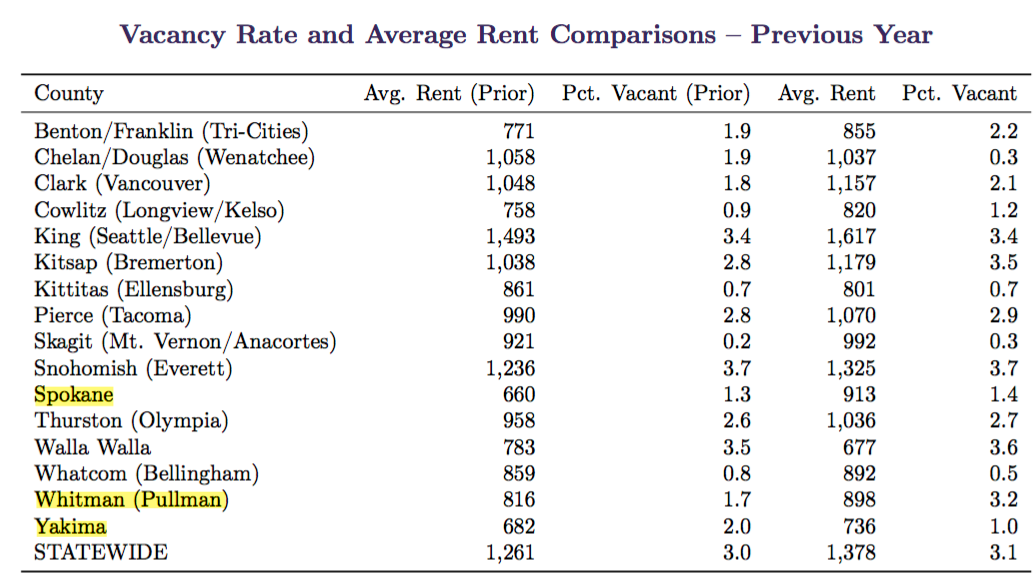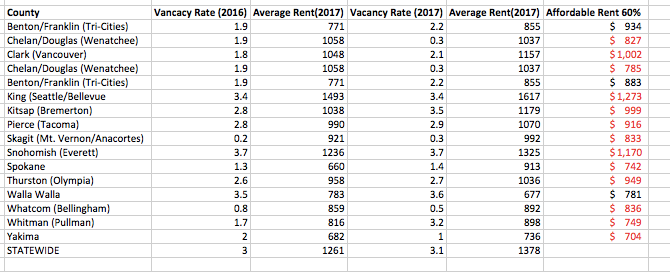Housing Trust Fund: Vacancy Rates Down in Many Rural Areas
We’ve looked at where Housing Trust Fund resources have gone between 2008 and 2016 by population, wages, and poverty. If need for housing subsidies is defined by income and poverty levels, clearly there’s a lot of need outside Seattle and King County, maybe more need. So what about vacancy rates in rural Washington. Vacancy rates are pretty good indicator of supply and demand since they reflect apartment units that are available to meet demand. I took a look at some Dupre + Scott data for vacancy rates in the state. The report, put together by the Runstad School at the University of Washington, has a lot of helpful data. Here’s what it says.
Washington State’s apartment vacancy rate decreased from 3.3% to 3.1% in spring 2017. While there is variability among the individual county rates, all counties included in the survey had vacancy rates below 4%, including Kittitas county. The Kittitas county data is often skewed because of the difficulty in gauging occupancy of a handful of buildings that typically house students at Central Washington University. Of the rest, fourteen counties have rates below three percent indicating a shortage of rental units. Seven of the nineteen counties included in the survey had decreasing vacancy rates compared to the same time period one year ago.
I’ve pointed out before that the vacancy rate in Yakima County is about 1 percent. Here’s the data for the counties surveyed.
I highlighted the counties that had the highest poverty rates and lowest wages in my last post. Here’s a chart with some of that data and all the counties.
This includes the counties in the survey with the vacancy rates, average rents, and I’ve included the affordable rent in the far right hand column. I got that by just taking the counties Area Median Income (AMI) level at 60 percent and dividing it by the monthly rent someone could pay if they spent 30 percent of their monthly income. I highlighted in red the amounts that fall short of the average rent in 2017. You’ll note Benton and Franklin are combined as are Chelan and Douglas County.
Simply put, rural counties are experiencing very low vacancy rates and rising prices. In some cases, these rural counties have lower vacancy rates that King County. So the notion that King County has lower available housing simply isn’t true. The spread between average rent and what is affordable at 60 percent AMI is highest in King County, but the gap is present all over the state. And in some places like Chelan and Douglas the vacancy rate is lower that 1 percent. Again, King County gets the most money and has the most people, but other places in the state with needs that are just as great are getting less money.




